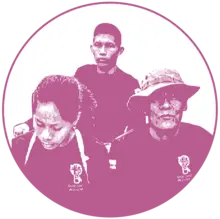This story excerpt was translated from Portuguese. To read the original story in full, visit Agência Pública. You may also view the original story on the Rainforest Journalism Fund website here. Our website is available in English, Spanish, bahasa Indonesia, French, and Portuguese.
The disappearance of indigenist Bruno Pereira and journalist Dom Phillips has shaken Maria. Three years ago, she and her daughter were on the motorcycle of another indigenist, her husband Maxciel Pereira dos Santos, when he was killed with two shots in the back of the head on Avenida da Amizade, the main public road in Tabatinga (AM). Occurring in September 2019, the crime has not been clarified to date by the Federal Police of Amazonas.
The effort of the search for the missing and the public demand for justice brought him, besides sadness, inevitable questions: "Why didn't they do the same about Max? I was very angry. I put myself in their family's shoes, but why leave us aside?" she asked in an interview with Agência Pública. Maria is not her real name; she asked not to be identified, saying she wanted to avoid the harassment of news coverage.

As a nonprofit journalism organization, we depend on your support to fund coverage of Indigenous issues and communities. Donate any amount today to become a Pulitzer Center Champion and receive exclusive benefits!
Maria says she met Maxciel in 2015 at a party in the city of Atalaia do Norte (AM). The former Funai employee took Maria's daughter from another relationship and the two were together until the death of Max, as he was known. When he died, the couple lived with her mother and were about to move to their own house in Atalaia. They lived off Max's work, since Maria, a teacher, had been laid off and her only income came from selling "Din Din" (also called ice cream or gelinho in other parts of the country).









